Text
15 Book Challenge
Planning
The first thing the librarian should do is meet with the appropriate administrators to discuss the program idea and get approval if needed. If the program is to be successful, it would be important to promote it to the staff and students with approval from administration. Involving teachers and paraprofessionals in the challenge would most likely increase its success. When planning for a book challenge, the librarian will need to choose categories for books. The categories can be adjusted for different age groups or grade levels as well as the interests of the library community. The librarian may want to add or take away categories depending on the reading culture of the campus. If the campus is struggling with its reading culture, then the number of books would be lower than for a campus that has a strong reading culture. At the beginning of the program, the librarian should plan to create library displays that support the program.
August – Kindness (pairs with Raider Camp activities that focus on character education)
September –Banned Books Week
October – Mysteries and Horror Stories
November – Nonfiction/Biography, Autobiography, Memoir (pairs with Literary Nonfiction Units in ELAR classes)
December – New York Times Best-Sellers
January – Science Fiction, Award-Winning Books
February – Historical Fiction/Black History Month
March – Graphic Novels/Female Authors/Women’s History
April – Picture Books
Preparation
The librarian will need to create flyers to give information about the challenge and promote it to students and staff. The program should be promoted on campus as well as on the school and library social media platforms. Posters advertising the challenge should be put up around campus and the information about it should be included in the daily announcements. The information should also be included on the library website. Adding reminders to a Monthly Planner would be helpful in following through with these tasks. In addition to flyers, the librarian will need to create a way to track student progress and determine when students have met the challenge. A Google Form would be a one way to track progress. The form could be set up with general reading response questions that could be used to check whether or not a student or staff member read a particular book. Google Forms would give the respondent the option to type a response or record one. For example, one option would be to have the respondent give a review of the book, such as those found on Amazon or other sites. The requirements for the Google Form would need to be, and it would be a good idea to show examples of authentic book reviews to students and staff members. The librarian could do this at the beginning of the school year during library orientation. An example could be sent out to staff members in an email or included in a library newsletter. Finally, the librarian should track books read by each participant to determine who is eligible for the incentive at the end of the year. An Excel worksheet or Google Sheet can be used to track progress. A bulletin board or display should be prepared to showcase the results of the challenge. Certificates should be printed or ordered for those who meet the challenge and qualify for recognition at the Awards Ceremony at the end of the year.
Examples of displays can be found at the links below:
https://i.pinimg.com/originals/f7/a7/63/f7a763b8cd23215d5e9fab4dd7d6be67.jpg
https://i.pinimg.com/originals/46/74/e9/4674e91002108a699c702011bcab8c75.jpg
Promotion
The 15 Book Challenge should be advertised around campus with flyers and posted on the library’s social media platforms. The information should also be posted on the library’s website. Library bulletin boards and displays should correspond to the 15 Book Challenge to peak interest in the various categories on the challenge sheet. Information about the challenge should also be included in daily announcements on a regular basis. Collaborating with the ELAR teachers is important in promoting the program to make it a success. Allowing students and teachers to count books read as a class would be a motivating factor for students.
Procedures
1. At the beginning of the school year, the librarian would introduce and explain the 15 Book Challenge to all ELAR classes during library orientation. The information would be added to the library website and sent out via the library’s social media accounts. Flyers would be posted around campus, and a bulletin board would be created in the library to promote the challenge. The end date of the program should be made clear along with the requirements and for meeting the challenge. Students are given a flyer containing fifteen categories. Students would choose one title for each category. For example, categories may include science fiction, a banned book, a book by a female author, mystery, etc.
2. Displays should be created throughout the school year that correspond to the categories of books included in the 15 Book Challenge. The list of months in the planning section gives specific details.
3. The librarian will track student progress as Google Forms are submitted. Some of the written or video reviews can be shared with teachers and students if permission is granted. For example, a video response could be included in the library newsletter or posted to the library’s social media accounts. News about the challenge should be included in communication to teachers, students, and parents. A bulletin board should be set up in a prominent location for recognizing those who complete the challenge.
4. Students will track their books using the handout provided to them at the beginning of the program. This could be a part of the independent reading program in the ELAR classes. The librarian would need to collaborate with the ELAR teachers on the best way to help students keep track of their results. An example of a flyer can be found at the link below:
https://www.pinterest.com/pin/46936021097262597/
5. The librarian would need to meet with administration to finalize the details of the incentive trip or party. The librarian would need to compile a list of teachers and students who qualified for the incentive and inform those who qualify. Field trip procedures would need to be followed if a field trip is decided on, and purchase orders should be submitted in a timely manner for any purchases that would need to be made for an incentive party. Proper communication would need to be sent out for whatever incentive is chosen. The librarian would need to begin this process before the end of the year approaches.
6. A certificate would be given at the Awards Ceremony during the last week of school to those students who met the reading challenge.
Payoff
A Reading Challenge would have several benefits for a campus struggling with literacy. It would provide an incentive for students and teachers to increase the amount of time devoted to reading for pleasure. Library use and circulation would increase, which would be beneficial for the library program as well as the campus as a whole. A reading challenge would get students and teachers talking about books. This would increase interest in reading, help students build background knowledge, and improve comprehension skills. Ultimately, standardized test scores would improve across all subject areas.
1 note
·
View note
Text
Unity in the Community
Unity in the Community
Planning Each month we will celebrate a different culture. Through the library, we will read a book each month and have an activity to go with it. Also, teachers will be provided a slide deck of more books and activities that they can do within the classroom each month.
August- Diversity Awareness month Read Speak Up by Miranda Paul for K-2 and Just Ask by Sonia Sotomayor for 3-5. Have students talk about what makes them unique. Each student will design a quilt square on a 4x4 in piece of white construction paper that represents them. The squares will be put together to form a quilt and displayed in the front commons area. Unity in the Community Slide Deck
Sept-Hispanic Heritage month Read Planting Stories by Anika Denise for all grade levels. Have students talk about stories that they love. Students will then learn how to make papel picado using construction paper. Use the tutorial found here: https://www.deepspacesparkle.com/how-to-make-a-papel-picado/ Fifth graders will come in to help kindergartens make their papel picado. Hispanic Heritage Slide Deck
Oct-Italian American- Read The Pasta Family by Cory Tilson for K-5. Talk about how families can look different no matter where we come from. If time allows, watch a video about how to make pasta. Students will select a recipe that represents their family. We will then make a digital class cookbook using the recipes that students select.
Nov- Indigenous people heritage month Read We are Water Protectors by Carole Lindstrom for K-5. Have students explore different indigenous tribes through PebbleGo. Students will create a housing structure to represent the tribe that they select to study. Native American slide deck
Dec- Holidays Around the World Students will learn about different holidays that occur around the world such as Diwali, Hanukkah, Chinese New Year, and Kwanza. Start by introducing students to the holidays through books such as Diwali by Allan Morey, On Hanukkah by Cathy Goldberg Fishman, Kwanzaa by Lola M. Schaefer, and A New Year's Reunion by Yu Li-Qiong. Introduce two holidays the first week and then two more the second week. On the third-week show students where they can find more information on the different holidays through PebbleGo and Britannica. Students will then be divided into holiday groups and begin researching their selected holiday. Students will spend the next two classes researching their holidays and planning how to share their knowledge. In the final week, students will finish displaying their learning in whatever way they have decided. Students can share their learning through a display board, video, slide deck, or any other creative way they come up with. Students will display their creations at our Winter Wonderland so that both parents and students can see their projects. Holiday Slide Deck
Jan-Feb - Black History Read Mae in Space to K-2 and What Would You Do with a Voice Like That to 3-5. Have students research African American biographies through Britannica. This will allow students to have experience with 2 databases now. 2nd through 5th will take the information they have learned and make a poster on Google Slides. Kinder and 1st will create a poster together on the touch screen to become familiar with Google Slides. Black History Month Slide Deck
March- Woman & Irish American- Read The Power of Her Pen by Lesa Cline-Ransome to 3-5th and Just Like Beverly: A Biography of Beverly Cleary by Vicki Conrad to K-2nd. Have students use the power of their pen to write a note to someone who has influenced their life. Students will have different choices in how they produce their notes. They can make a physical card or they can make one digitally. Read Fiona’s Luck by Teresa Bateman for K-5th. Have students create lucky charm catapults. Students will get popsicle sticks, masking tape, and rubber bands to create the catapult. Students will work in teams of 3 to create their catapult. Once students have built their structures they will use lucky charms to test them out and see who’s catapult can shoot the furthest. Women in History
April -Arab American & Disability Awareness Read Frank the Seven Legged Spider to K-2 and The William Hoy Story to 3-5th. Students will have different tasks to do that simulates what it would be like to have different disabilities. Use the activities from HIE Help Center: https://hiehelpcenter.org/disability-awareness-class-lessons/
May- Asian & Jewish Read Eyes that Kiss in the Corners to K-2 and Watercress to 3-5. Have students in 3-5th grade pick a country within Asia to research. Have students in each class build a slide deck of all the different countries they have researched. Students will include a picture that represents the country and 5 facts they learned. Kindergarten through second grade will learn as a class where Asia is and about the different kinds of animals that live on the continent of Asia.
Promotion

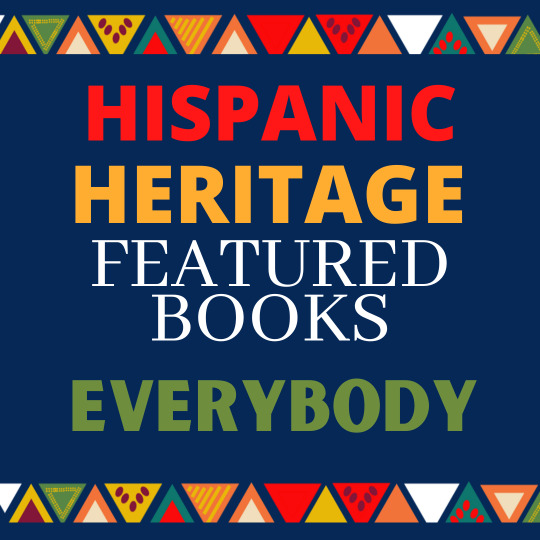
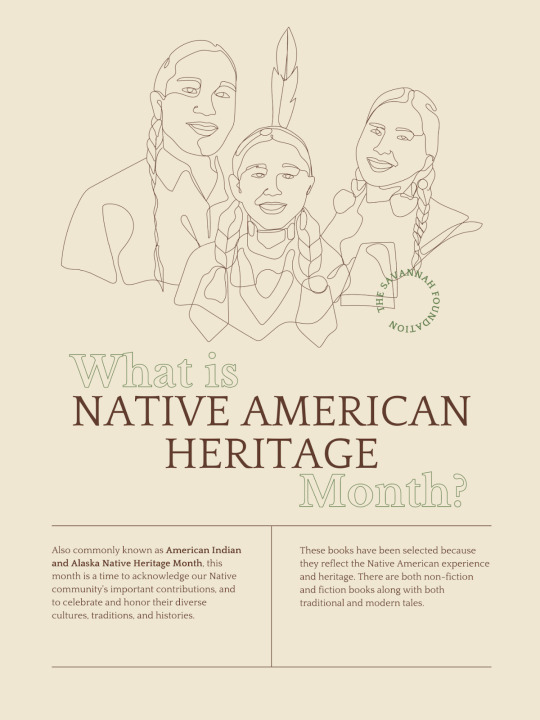
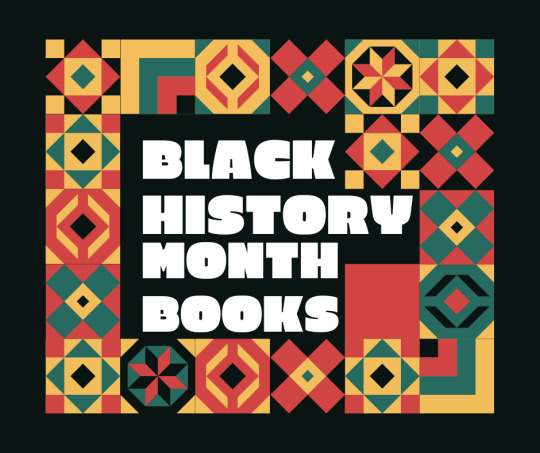
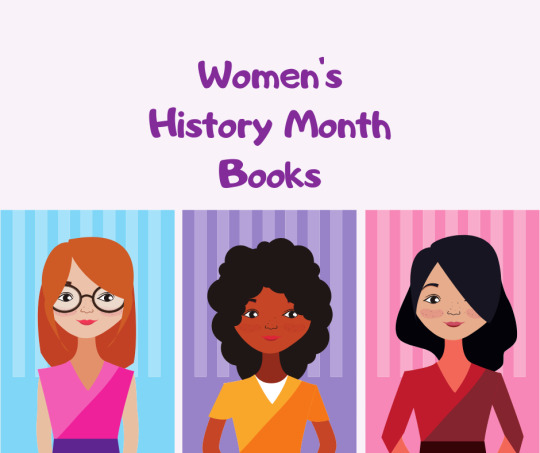
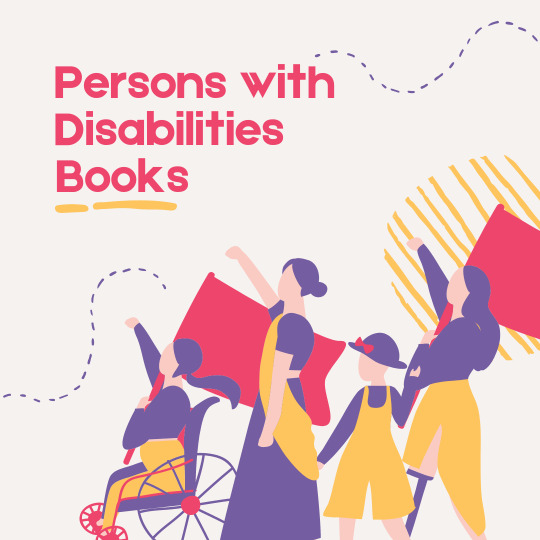
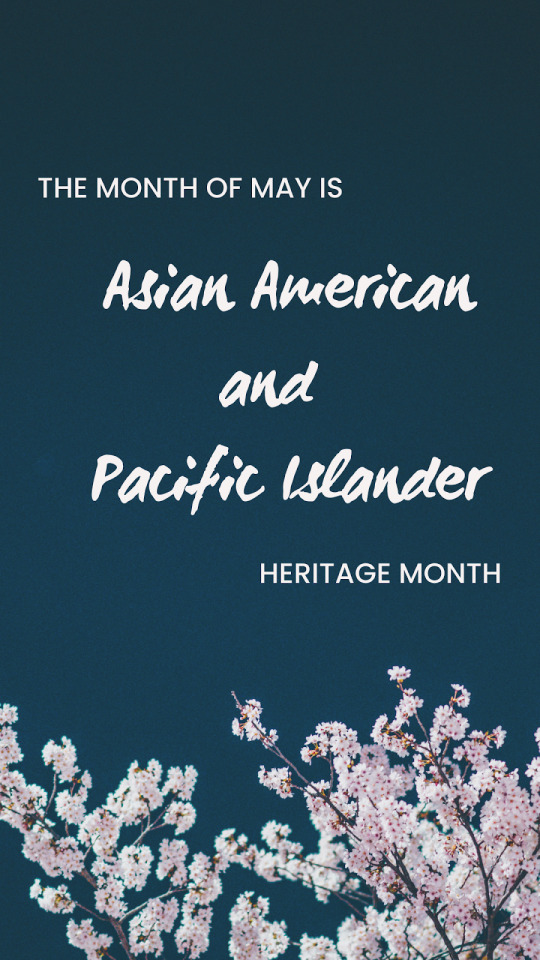
Preparations: At the beginning of each month pull the books that represent the theme of the month. Print and display the posters for each month next to the book displays. Each month the news will feature music from the culture that is being highlighted.
Procedures: Introduce the culture that is being highlighted at the beginning of each month. Show students where the books are that represent the culture so they can check them out if they choose. Book talk several of the books each week to continue to highlight the culture throughout the month. Whatever the students create for the month will be displayed throughout the library for other classes to look at.
Payoff: The goal is to increase students' cultural awareness. In my district, we have something called a portrait of a graduate and one of the things they want students to become is a global citizens. In order to become a global citizens, students must first learn about the world. Another goal is to increase the circulation of the books that are highlighted and expand students' interest in different kinds of books.
*All promotions were made through Canva.
0 notes
Text
March Madness Tournament of Books
Planning
Planning will need to begin a few weeks before the first week in March. The librarian will need to pick sixteen YA books for the bracket. Supplies will need to be gathered or ordered to make the bracket, and online and paper ballots will need to be created for each week of the tournament. The librarian will need to coordinate with the person or group who handles the daily announcements so that video book trailers can be added to video announcements or brief book talks can be added to announcements that are made over the intercom each morning.
Preparation
The following list of supplies will need to be purchased or gathered to create a bracket:
Butcher/Chart Paper
Black tape
Images of the book covers for each of the sixteen titles
Cut-out letters
Space will need to be cleared and designated for the bracket. An example of the bracket is available at the link below.
https://brownbagteacher.com/book-madness-march-book-display/
The librarian will also need to create a Google Form and//or paper ballots to gather votes. The tournament can begin at the end of February and run through March, following the NCAA tournament dates.
Prizes will need to be purchased – one per week of the tournament. Each Friday, one ballot will be chosen from the Google Forms and paper ballots submitted. The librarian will need to make sure that the Google Form collects the email address when the participant votes. The prize could be a copy of one of the books or a gift card to a local teen hangout. The librarian will also need to read each of the titles selected in order to be able to discuss the book with students. If video announcements are used on campus then the librarian will need to download a book trailer for each book. Book trailers can be found on YouTube. If there are no video announcements, then the librarian will need to give a brief book talk on each book to be voted on. This can be done during morning announcements, or the librarian could record a podcast or video and add it to the Google Form and Social Media in place of the YouTube videos.
Promotion
The tournament will need to be promoted through the daily announcements and posted to the library website and social media accounts. The bracket should be put up in advance and be in a prominent place where there is lots of student traffic to gain attention and keep students engaged in the tournament.
Procedures
Create the bracket and place it in a prominent location with plenty of space.
Promote the tournament by announcing it and posting about it.
Begin by playing the book trailers for the first two books and have students vote using the Google form or the paper ballot. Set a deadline for submitting votes.
Tally the votes and announce the winner through the daily announcements and social media accounts.
Continue through the bracket until a winner is determined.
Make an announcement and post about the winning book.
Be prepared to discuss the sixteen books with students by reading each of the titles beforehand.
Payoff
Hopefully, the March Madness Tournament of Books will increase circulation numbers. Students will be introduced to a variety of good reads. By choosing award-winning, high interest novels, the librarian can hopefully allow every student to see him or herself in one or more of the books. Students may even discuss the books with each other which will increase learning outcomes.
0 notes
Text
Research the Cowboy Way of Life
Subject Area Integrated: English Language Arts and Reading, Social Studies
Information & 21st Century Skill Objectives:
Learners act on an information need by: 1. Determining the need to gather information.
Learners engage with the learning community by: 1. Expressing curiosity about a topic of personal interest or curricular relevance.
Learners gather information appropriate to the task by: 1. Seeking a variety of sources. 2. Collecting information representing diverse perspectives. 3. Systematically questioning and assessing the validity and accuracy of information. 4. Organizing information by priority, topic, or other systematic scheme.
Learners develop and satisfy personal curiosity by: 1. Reading widely and deeply in multiple formats and write and create for a variety of purposes.
Materials:
KWL chart
Why Cowboys Sleep With Their Boots On by Lazzaro Knowlton
T-Chart handout
Devices with internet access
Online databases
Instructional Procedures:
Students fill in the “K” column with information they know about the cowboy way of life and the “W” column with information they would like to learn about it.
The librarian will set a timer and allow students will share they information with a partner.
The librarian will ask for volunteers (or call on students) to share information something they heard from their partner during the discussion.
The librarian will read aloud the book Why Cowboys Sleep Their Boots On by Lazzaro Knowlton.
The librarian will give a mini-lesson on using the library’s online databases by modeling how to get into TxQuest Resources and how to search for information within the databases.
Students will be given time to search for information about the cowboy way of life and to fill in the T-Chart with the pros and cons of it.
If time remains, students will be allowed to complete the Cowboy word find or take the AR quiz over the story Why Cowboys Sleep With Their Boots On. The AR quiz # is 13549,
Assessment:
T-Chart has pluses and minuses of the cowboy way of life
Related Materials & Resources:
https://www.educationworld.com/a_tsl/archives/04-1/lesson033.shtml
Discovery Education video - America: Facts versus Fiction: The Real West
https://www.wordsearchwhiz.com/images/cowboy-word-search.jpg
0 notes
Text
Subject Area Integrated: Finding Library Books
Grade Level: 2-5th Grade
Information & 21st Century Skill Objectives: Students will be able to find a Fiction or Nonfiction book from a section in the library based on the call number.
Materials:
Index Cards: F for Fiction or Number for Nonfiction written on the card. (Example F Authors Last Name J, 500s, 900s)
Book Sort Game: Shelve It https://shelver.mrs-lodges-library.com/
PowerPoint Presentation: with examples and pictures of where to locate call numbers and where locations are in library.
Books for examples of call numbers
Instructional Procedures: We will begin with the PowerPoint presentation: I will cover how the fiction and nonfiction sections are organized. Then as a class we will do the Shelve It game on the projector. Students will start with 3 books and work their way up to sorting 8 books. We will do a minimum of 3 rounds for each Fiction and Dewey Decimal sort.
Suggested Instructional Strategies: Can have students write their sorting answers on a dry erase board during the Shelve It game to check for individual student understanding.
Assessment:
The class will be divided into two teams. The students will line up or each side of the tables. The students will have a card turned over next to them. On “Go” the first student in line will flip over their card and run to find the book in the location on their card. As each student returns and places their book back on the table the next student will go until all team members have gone. 1st relay team to finish and with the most correctly located books will be the winner and earn a prize. (Bookmark, candy, extra book check out etc.)
Related Materials & Resources:
You can create a powerpoint or google slides to go over the dewey system and how the books are organized in the library.
0 notes
Photo
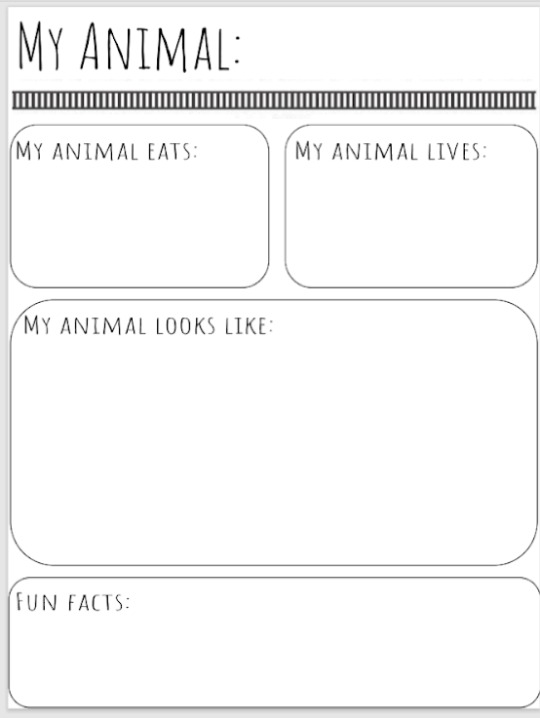
Subject Area Integrated: Research Tool, Pebble Go
Grade Level: Pre-K-1st Grade
Information & 21st Century Skill Objectives: Students will be able to use research an animal using the program Pebble Go. Students will be able to find at least 2 facts about the animal of their choice.
Materials:
Book: Packs “Strength in Numbers” by Hannah Salyer
IPads/laptops and headphones for each student (if not enough for each student you can partner students or have students work in groups.
Animal Research Fact Sheet.
Instructional Procedures: We will begin by reading the story “Packs, Strength in Numbers” and discuss how each animal works together and why they work together. Students will then be told that they are going to do research on an animal. Students will then be shown Pebble Go on the projector. I will walk students through how to find the animals and how to have the program read the text to them. Then I will show students the fact sheet and what they will be looking for about their animals. The students have the option of writing down the facts using words or drawing a picture.
Suggested Instructional Strategies: If students have writing or drawing difficulties the teacher can have the students share a fact about their animal verbally.
Assessment: Students will be able to produce an answer to at least 2 of the fact sheet boxes. /someone
Related Materials & Resources: If students are finished early you can give them free choice to learn about something/someone else through the Pebble Go site.
Animal Fact Data Sheet:
0 notes
Text
STEAM: Science, Technology, Engineering, Art, and Math
Subject Area Integrated: Research Tool, Pebble Go
Grade Level: Pre-K-1st Grade
Information & 21st Century Skill Objectives: Students will be able to use research an animal using the program Pebble Go. Students will be able to find at least 2 facts about the animal of their choice.
Materials:
Book: Packs “Strength in Numbers” by Hannah Salyer
IPads/laptops and headphones for each student (if not enough for each student you can partner students or have students work in groups.
Animal Research Fact Sheet.
Instructional Procedures: We will begin by reading the story “Packs, Strength in Numbers” and discuss how each animal works together and why they work together. Students will then be told that they are going to do research on an animal. Students will then be shown Pebble Go on the projector. I will walk students through how to find the animals and how to have the program read the text to them. Then I will show students the fact sheet and what they will be looking for about their animals. The students have the option of writing down the facts using words or drawing a picture.
Suggested Instructional Strategies: If students have writing or drawing difficulties the teacher can have the students share a fact about their animal verbally.
Assessment: Students will be able to produce an answer to at least 2 of the fact sheet boxes. /someone
Related Materials & Resources: If students are finished early you can give them free choice to learn about something/someone else through the Pebble Go site.
Animal Fact Data Sheet:
0 notes
Text
STEAM: Black History
Black History STEAM Challenge
Subject Area Integrated: Science, technology, engineering, art, and math
Grade Level: 2nd-5th Grade
Information & 21st Century Skill Objectives: Students will be able to share 3 or more facts about an African American inventor and/or scientist. Students will be able to select an African American Great and design an object based on the chosen STEAM challenge.
Materials:
STEAM planning Sheet (scratch sheet)
9 STEAM challenges for students to choose from:
MLK: New monument honoring him
Mary Bethune: Something that can help someone teach someone something (any subject)
Mark Henson: design a flag you would put in the ground after decovering a new land.
Bessie Coleman: Design an airplane with a pilot in the cockpit
Micheal Jordan: Design a new type of basketball hoop
Mae Jemison: Design a new type of spacecraft
Tiger Woods: Design a new set of sports equipment (any sport)
Dizzy Gillespie: Design a new musical instrument or combine current ones into a new instrument.
George Washington Carver: Design a replica of your favorite meal or combination of your favorite foods.
White Drawing sheets 9 ½ x 11
Crayons
Pencils
Instructional Procedures:
Students will watch the following video on Black inventors and scientist:
https://www.youtube.com/watch?v=glZpu0xMSuM
I will quickly go over the 9 African American Greats that the challenges relate to and then explain each challenge and what the expectations are.
Students will have 20 mins to draw and design one of the following with a partner or individually. (if you have more time in your class period feel free to add more time here)
Students will then share their designs with the class.
Suggested Instructional Strategies:
You will know your students so having them work with a partner may help those more timid students. Also allowing them the option to choose their partner may make it easier for collaboration but beware that can also be a distraction because they will just talk and play instead of focusing on the task. I personally chose to have the students do it individually so I can see each students creativity. It also allows for them to concentrate better without having to consult with another person.
Assessment:
Students will present their final design and explain what everything is and how it works within an 1-3 min presentation. (depending on the time frame you have)
Related Materials & Resources:
The Challenge sheets I purchased on Teachers Pay Teachers but feel free to create your own.
0 notes
Text
Digital Citizenship
Subject Area Integrated: Digital Citizenship
Grade Level: 2nd-5th Grade
Information & 21st Century Skill Objectives:
Grades 3rd-5th Grade: Attribute, copyright, intellectual property, license, plagiarism.
Students will be able to know ways they can navigate the internet safely.
Materials:
Brain Pop Video: Digital Citizenship
Common Sense Media Videos https://www.commonsense.org/education/digital-citizenship/curriculum
Laptops/iPads
Internet access (google:Interland)
Instructional Procedures:
Students 2-5 Grade will watch the Brain Pop video: Digital Citizenship. We will then discuss ways to create a secure password, what is ok and what is not ok to share on the internet, also what do when faced with cyber bullying and hackers. Students will then log onto the laptops or iPads and play the game Interland where they will work on the following tasks to get their character through the different worlds:
Share with Care: Digital Footprint and Responsible Communication
Don’t Fall for Fake: Phishing, Scams, and Credible Sources
Secure Your Secrets: Online Security and Passwords
It’s Cool to Be Kind: Combating Negative Online Behavior
When in Doubt, Talk It Out: Questionable Content and Scenarios
Suggested Instructional Strategies:
Students could also respond to discussion questions via a program like Schoology or Google Classroom if you are providing instruction online.
Students can work together in partners or groups while play the game to assist them.
The read the instructions to the students and has it as written text if you have any students with Hearing impairments.
Assessment:
Students will complete an exit ticket on a sticky note sharing one thing that is safe to share online and one thing that is not safe to share online.
Related Materials & Resources:
Curriculum from Interland: https://storage.googleapis.com/gweb-interland.appspot.com/en-us/hub/pdfs/2021/BIA_Curriculum_June-2021_EN_PDF-Version.pdf
0 notes
Text
History of Monopoly
Subject Area Integrated: The History of Monopoly
Grade Level: 2-5th Grade
Information & 21st Century Skill Objectives: Students will learn about how the game of monopoly was created while also collaborating with classmates to create their own game board version of the game.
Materials:
Book: Pass Go and Collect $200: the real story of how Monopoly was Invented
9 x11” Construction Paper
Crayons, Makers, Colored Pencils
Instructional Procedures:
We will read the book and go over the traditional monopoly board and the rules.
I will keep a projected picture of the board and game pieces.
Students will work in groups of 4-5 students. Students will do one of the specific jobs to create a new version of Monopoly as follows:
Draw the game board
Draw examples of the money (1, 10, 20, 100, 500)
Draw the game pieces (Up to 8 max)
Draw examples of the Chance & Community Chest Cards (4 min)
Students will have 20-30 mins to finish their game. If time permits I would have the students present their game boards to the class in 2-3 mins presentations.
Suggested Instructional Strategies:
This is a great activity to have during makerspace because it allows for students to use their creativity and group collaboration. If you have a monopoly game(s) I would bring it in so students can view the game board up close.
Assessment: Students will submit their game board. You can create your own rubric. You also can have students present their games.
Related Materials & Resources:
Monopoly Rules: https://www.hasbro.com/common/instruct/monins.pdf
https://www.hasbro.com/common/instruct/00009.pdf
0 notes
Text
Comics/Internet Safety
Subject Area Integrated: Comics/Graphic Novels/Internet Safety
Grade Level: 1-2 Grade
Information & 21st Century Skill Objectives:
Students will learn about the style of books known as graphic novels and how to create one.
Students will be able to create a comic strip depicting a short story on internet safety.
Materials:
6 Panel Comic strip
Lined paper
Pencils, crayons, markers etc.
Videos 1-5 “How to write a graphic novel for kids.” Youtube:
Instructional Procedures:
Students will be learning about the style of books called graphic novels that are very similar to comic books.
Students will watch the 6 one minute videos about how to write a graphic novel.
Then students will be creating a simple 6 panel comic about internet safety. They can have any amount and type of characters and setting. The characters will have to experience a problem such as cyberbullying, spam, strangers talking to them online, etc. The comic will display what to do if you are in this situation.
Students can share their comic with a neighbor or present to the class depending on time.
Suggested Instructional Strategies:
Students in my class have already had the internet safety lesson so it would just be a refresher. I put some of the key vocabulary words with shortened definitions from the previous lesson on the board (catfishing, smishing, malicious etc).
Assessment: Students will submit their comics at the end of class and students can also fill out a rubric on their partners comic for peer to peer feedback.
Related Materials & Resources:
Youtube 1 minute Lessons “How to make a graphic novel for kids”
https://www.youtube.com/watch?v=RgS-HK6rnk0&t=8s
https://www.youtube.com/watch?v=jm0LgxB_ht4
https://www.youtube.com/watch?v=5aOL-ECt3yE
https://www.youtube.com/watch?v=Z9uIxIzDGmw
https://www.youtube.com/watch?v=6Dvjid0Vn-g
https://www.youtube.com/watch?v=1xLL9D1RSlg
0 notes
Link
The Raptor Library Club will be an organization composed of 3rd-5th grade students. In addition to reading activities and book talks, the members of this club will have the opportunity to read to younger students on campus once a month. This will be beneficial to both scholars as they continue to develop their fluency as well as to practice intonation and reading comprehension strategies.th...
0 notes
Text
Dia Del Muertos/Day of the Dead
Dia Del Muertos/Day of the Dead
Students (Grades 2-5) will be creating candy skull portraits for the Day of the dead.
Planning: Students will need at least 2-3 days to complete this assignment. Students will learn about what Dia del Muertos is and how it is celebrated. Students will need pencils and crayons as well as white construction paper. Students will sketch out their skulls and create designs. Students will then finish coloring their skulls.
Promotion: A few weeks before The Day of the Dead decorations will be put up throughout the library. The book display will have books about Dia Del Muertos on display.
Preparations: 8x11 ½ inch Construction paper, buckets of crayons for students who don’t have their own pencils. Students will follow along with the video via YouTube on creating their sugar skull. Students will also view several videos explaining the Day of the Dead.
Dia Del Muertos Celebrations: https://www.youtube.com/watch?v=mLjG4d4ePcM
National Geographic: https://www.youtube.com/watch?v=_sSawpU81cI&t=35s
Brain Pop: https://www.youtube.com/watch?v=t_fEeVr2ykY
Procedures:
Day 1: Students will listen to the following dia Del Muertos video. Afterwards I will explain the symbols that they will notice used for decorations and explain that we will be making Sugar Skulls. Students will watch the video and follow along to sketch their skulls and begin their designs.
Day 2: Students will continue creating their skull designs and start coloring their skulls.
Day 3: If needed students will complete their skulls and submit final drawings to the librarian.
Payoff: Students will have their sugar skull displayed along the wall of the book display for students and staff to see.
0 notes
Text
Mystery Bluebonnet
Mystery Bluebonnet
Planning: 1. Introduce students to several Bluebonnet Books each
week and have them draw posters as they read the
book. 2. With 20 books, it should take right at 7 weeks to
introduce them.
Promotion: 1. Use the student art around the school to advertise all
of the Bluebonnet Books. 2. All posters should include Title, Author, Illustrator if
applicable, and the cover or scene from the book.
Preparations: 1. Choose a Mystery Bluebonnet Each week for the six
weeks leading up to voting. 2. Prepare a small paper that includes Student Name,
Homeroom, and a short summary of what they read.
Procedures: 1. Every time a student reads a Bluebonnet book, they
put a short summary of the book in the Golden Snitch
Bowl. (Made by student out of a fish bowl. Amazing.)
Each week, choose a different “Mystery Bluebonnet.”
Any student that has read that book is eligible for a
prize.
Students name is announced over the intercom, and
student comes to library to choose a book as a prize.
Payoff: 1. Students have no idea what the Mystery Bluebonnet
is going to be for the week. 2. THIS GETS STUDENTS READING BOOKS!!!!
0 notes
Text
A Seussical Evening
A Seussical Evening
Purpose: *To encourage families to have fun together by
participating in reading activities based on the books by Dr. Seuss.
Promotion: *During library time, students will make invitations for
their families to the event. Invitations will be given to go home in each child’s Tuesday Folder. Students can also create a poster to enter the art competition. (Posters will be put around the school. Teachers will vote in different categories using a Google Form. Dr. Seuss books and/or stuffed animals will be used as decorations then prizes.) Event will also be promoted with social media posts by librarian to library and school’s Facebook pages, Twitter feeds, and Instagram, and Class Dojo accounts.
*Event will happen the first week of March one evening from 5:30 - 7:30.
Preparation: *Materials needed:
*Posterboard *Cardstock *Construction Paper *Pencils
*Colored pencils
*Markers *Scissors *Glue *Each grade level and the fine arts teachers will be in
charge of planning with an activity based on a Dr. Seuss book. Librarian will be in charge of getting promotional fliers for the evening and making sure each group is using a different book. (Poster contest will be held for promotional signs. Each student will make a personal invitation to take home.)
*Event will be held in the large parking lot outside of the auditorium.
*Each team will be given a $50 budget to purchase materials needed for the activities their group will be doing. Librarian will collect receipts and submit them for reimbursement.
*The night of the event, each group will have a table to set up and decorate.
Kindergarten Book: First Grade: Second Grade: Third Grade: Fourth Grade: Choir:
Theater Band/Orchestra: Art:
The Cat in the Hat The Foot Book Hop on Pop The Wocket in my Pocket The Lorax
Songs from Seussical: The Musical Original skits from Seuss books Songs from Suessical: The Musical Painting display
*Students are invited to address up in Dr. Seuss costumes if they choose to.
Procedures: *Families go around the different booths like a carnival
participating in different games and crafts each grade level has put together.
*There will also be several food trucks for families to enjoy while walking around.
*Teachers run their booths with librarian checking on and relieving workers as needed.
*Fine Arts groups play a few songs at the beginning of the evening, and the choir sings their song during the middle of the event.
Payoff: A fantastic night for families to enjoy spending time together celebrating Dr. Seuss.
0 notes
Text
Book Exchange
Book Exchange
*Flyers *Tickets *Extra books provided by teachers (if needed) *Large tables *Posters (Student made)
Promotion
*A few weeks in advance, start hanging student made posters around the school advertising the Book Exchange that is coming up.
Preparations
*Students can start bringing books to put in the swap. *For every book a student brings, keep a running tally of that number. *On the night of the swap, set up tables where students can trade books for tickets. *(Make sure a book is in good condition before adding it to the swap. If it’s not in good condition or not age appropriate, put one of your donated books.
Procedures
*Set-up large tables to put the books on tables by grade level. *Employ some 6th grade “runners” to put the books on the appropriate table. *Students can get a book for every ticket they have.
*(Ask teachers for extra books so that students without books to exchange can still participate in the activity.) *Allow students to browse age appropriate books and choose a book for every ticket they have.
*Students can buy books using the tickets they’ve gotten. *Put in extra books for those students who did not bring any books for whatever reason. Every reading teacher can most likely donate several books for the trade.
Payoff
*Students can get new books to read. *Student choice is better than having adults choose the book for them. *This will get students reading! Nothing beats a new book!
0 notes
